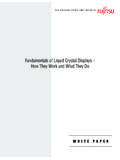Transcription of VISION IAS - s3-us-west-2.amazonaws.com
1 VISION IAS. Environment Previous Year Questions 2013-2020 (Syllabus-wise). General Studies I: Indian Heritage and Culture, History and Geography of the World and Society. General Studies III: Technology, Economic Development, Bio diversity, Environment, Security and Disaster Management Climate Change Bring out the relationship between the shrinking Himalayan glaciers and the symptoms of climate change in the Indian sub-continent. (GS-I 2014, 10 Marks). Should the pursuit of carbon credits and clean development mechanisms set up under UNFCCC be maintained even though there has been a massive slide in the value of a carbon credit? Discuss with respect to India's energy needs for economic growth. (GS-III 2014 , Marks). How does the cryosphere affect global climate? (GS-I 2017, 10 Marks). Climate Change' is a global problem. How India will be affected by climate change? How Himalayan and coastal states of India will be affected by climate change? (GS-III 2017, 15 Marks). Assess the impact of global warming on the coral life system with examples.
2 (GS-I 2019, 10 Marks). Examine the status of forest resources of India and its resultant impact on climate change. (GS-I 2020, 15. Marks). Air Pollution Environmental Impact Assessment studies are increasingly undertaken before a project is cleared by the Government. Discuss the environmental impacts of coal-fired thermal plants located at coal pitheads. (GS- III 2014, Marks). Mumbai, Delhi and Kolkata are the three Mega cities of the country but the air pollution is much more serious problem in Delhi as compared to the other two. Why is this so? (GS-I 2015, Marks). What are the key features of the National Clean Air Programme (NCAP) initiated by the Government of India? (GS-III 2020, 15 Marks). Water Enumerate the National Water Policy of India. Taking river Ganges as an example, discuss the strategies which may be adopted for river water pollution control and management. What are the legal provisions of management and handling of hazardous wastes in India? (GS-III 2013, 10 Marks). India is well endowed with fresh water resources.
3 Critically examine why it still suffers from water scarcity. (GS-I 2015, Marks). Discuss the Namami Gange and National Mission for Clean Ganga (NMCG) programmes and causes of mixed results from the previous schemes. What quantum leaps can help preserve the river Ganga better than incremental inputs? (GS-III 2015, Marks). In what way micro-watershed development projects help in water conservation in drought-prone and semi-arid regions of India? (GS-I 2016, Marks). What are the consequences of spreading of Dead Zones' on marine ecosystem? (GS-I 2018, 10 Marks). The ideal solution of depleting ground water resources in India is water harvesting system. How can it be made effective in urban areas? (GS-I 2018, 15 Marks). Defining blue revolution, explain the problems and strategies for pisciculture development in India. (GS-I. 2018, 15 Marks). What is water stress? How and why does it differ regionally in India? (GS-I 2019, 15 Marks). Elaborate the impact of National Watershed Project in increasing agricultural production from water- stressed areas.
4 (GS-III 2019, 10 Marks). How will the melting of Himalayan glaciers have a far-reaching impact on the water resources of India? (GS-I 2020, 10 Marks). What are the salient features of the Jal Shakti Abhiyan launched by the Government of India for water conservation and water security? (GS-III 2020, 10 Marks). Suggest measures to improve water storage and irrigation system to make its judicious use under depleting scenario. (GS-III 2020, 15 Marks). Land Degradation The process of desertification does not have climatic boundaries. Justify with examples. (GS-I 2020, 10. Marks). Sustainable Development What are the consequences of Illegal mining? Discuss the Ministry of Environment and Forest's concept of GO AND NO GO zones for coal mining sector. (GS-III 2013, 10 Marks). The states of Jammu and Kashmir, Himachal Pradesh and Uttarakhand are reaching the limits of econological carrying capacity due to tourism. Critically evaluate. (GS-I 2015, Marks). The effective management of land and water resources will drastically reduce the human miseries.
5 Explain. (GS-I 2016, Marks). "In spite of adverse environmental impact, coal mining is still inevitable for development." Discuss (GS-I. 2017, 10 Marks). Mention the advantages of the cultivation of pulses because of which the year 2016 was declared as the International Year of Pulses by the United Nations. (GS-I 2017, 10 Marks). In what way can floods be converted into a sustainable source of irrigation and all-weather inland navigation in India? (GS-I 2017, 15 Marks). What are the impediments in disposing the huge quantities of discarded solid wastes which are continuously being generated? How do we remove safely the toxic wastes that have been accumulating in our habitable environment? (GS-III 2018, 10 Marks). Sikkim is the first organic State' in India. What are the ecological and economical benefits of organic State? (GS-III 2018, 10 Marks). Coastal sand mining, whether legal or illegal, poses one of the biggest threats to our environment. Analyse the impact of sand mining along the Indian coasts, citing specific examples.
6 (GS-III 2019, 10 Marks). How far is Integrated Farming System (IFS) helpful in sustaining agricultural production? (GS-III 2019, 10. Marks). Define the concept of carrying capacity of an ecosystem as relevant to an environment. Explain how understanding this concept is vital while planning for sustainable development of a region. (GS-III 2019, 15 Marks). How does the draft Environmental Impact Assessment (EIA) Notification, 2020 differ from the existing EIA Notification, 2006? (GS-III 2020, 10 Marks). Renewable energy and Alternative Energy Resources It is said that India has substantial reserves of shale oil and gas, which can feed the needs of the country for quarter century. However, tapping of the resource does not appear to be high on the agenda. Discuss critically the availability and issues involved. (GS-I 2013, 10 Marks). With growing scarcity of fossil fuels, the atomic energy is gaining more and more significance in India. Discuss the availability of raw material required for the generation of atomic energy in India and in the world.
7 (GS-I 2013, 10 Marks). Give an account of the current status and the targets to be achieved pertaining to renewable energy sources in the country. Discuss in brief the importance of National Programme on light emitting Diodes (LEDs). (GS-III 2016, Marks). India has immense potential of solar energy though there are regional variations in its development. Elaborate. (GS-I 2020, 15 Marks). Describe the benefits of deriving electric energy from sunlight in contrast to the conventional energy generation. What are the initiatives offered by our Government for this purpose? (GS-III 2020, 15 Marks). Conservation Environmental Impact Assessment studies are increasingly undertaken before a project is cleared by the Government. Discuss the environmental impacts of coal-fired thermal plants located at coal pitheads. (GS- III 2014, Marks). Rehabilitation of human settlements is one of the important environmental impacts which always attracts controversy while planning major projects. Discuss the measures suggested for mitigation of this impact while proposing major developmental projects.
8 (GS-III 2016, Marks). What is wetland? Explain the Ramsar concept of wise use' in the context of wetland conservation. Cite two examples of Ramsar sites from India. (GS-III 2018, 10 Marks). How does biodiversity vary in India? How is the Biological Diversity Act, 2002 helpful in conservation of flora and fauna? (GS-III 2018, 15 Marks). Discuss the causes of depletion of mangroves and explain their importance in maintaining coastal ecology. (GS-I 2019, 10 Marks). How can the mountain ecosystem be restored from the negative impact of development initiatives and tourism? (GS-I 2019, 15 Marks). How is the government of India protecting traditional knowledge of medicine from patenting by pharmaceutical companies? (GS-III 2019, 15 Marks). Disaster Management The recent cyclone on the east coast of India was called Phailin'. How are the tropical cyclones named across the world? Elaborate. (GS-I 2013, 5 Marks). How important are vulnerability and risk assessment for pre-disaster management? As an administrator, what are key areas that you would focus on in a Disaster Management System?
9 (GS-III 2013, 10 Marks). Drought has been recognized as a disaster in view of its spatial expanse, temporal duration, slow onset and lasting effects on vulnerable sections. With a focus on the September 2010 guidelines from the National Disaster Management Authority (NDMA), discuss the mechanisms for preparedness to deal with likely El Nino and La Nina fallouts in India. (GS-III 2014, Marks). The frequency of earthquakes appears to have increased in the Indian subcontinent. However, India's preparedness for mitigating their impact has significant gaps. Discuss various aspects. (GS-III 2015, Marks). The Himalayas are highly prone to landslides. Discuss the causes and suggest suitable measures of mitigation. (GS-I 2016, Marks). Major cities of India are becoming vulnerable to flood conditions. Discuss. (GS-I 2016, Marks). The frequency of urban floods due to high intensity rainfall is increasing over the years. Discussing the reasons for urban floods, highlight the mechanisms for preparedness to reduce the risk during such events.
10 (GS-III 2016, Marks). With reference to National Disaster Management Authority (NDMA) guidelines, discuss the measures to be adopted to mitigate the impact of recent incidents of cloudbursts in many places of Uttarakhand. (GS- III 2016, Marks). On December 2004, tsumani brought havoc on 14 countries including India. Discuss the factors responsible for occurrence of Tsunami and its effects on life and economy. In the light of guidelines of NDMA (2010) describe the mechanisms for preparedness to reduce the risk during such events. (GS-III. 2017, 15 Marks). Describe various measures taken in India for Disaster Risk Reduction (DRR) before and after signing Sendai Framework for DRR (2015-2030)'. How is this framework different from Hyogo Framework for Action, 2005'? (GS-III 2018, 15 Marks). Vulnerability is an essential element for defining disaster impacts and its threat to people. How and in what ways can vulnerability to disasters be characterized? Discuss different types of vulnerability with reference to disasters.














